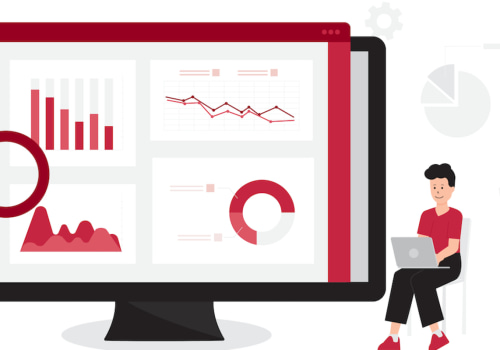Headings are an important element of on-page SEO, as they help search engines understand the structure and content of your page. This article will discuss optimizing H2, H3, etc. headings for search engines, and how to utilize them to help your page stand out from the competition. We'll cover tips for improving the structure of your headings, as well as how to ensure that your headings contain important keywords that will help boost your SEO rankings.
By following these steps and optimizing your headings, you'll be able to increase the visibility of your page in search engine results and attract more visitors!Heading tags are an important part of on-page SEO. They help search engines understand the structure of a page, and can be used to improve the relevance of a page for specific keyword searches. In addition, headings also make content easier to read and understand, and can be used to improve click-through rates from search results pages. When optimizing headings for search engines, it is important to use descriptive words and phrases, include keywords, and keep headings concise and relevant to the content.
Headings should be used in the correct order and structure, with H1 being the most important heading tag and H6 being the least important. It is also important to avoid keyword stuffing and over-optimization when optimizing heading tags for search engines. Doing so can have a negative impact on search rankings, as it can be seen as an attempt to manipulate the search engine results. Structured data markup can also be used to improve visibility in search engine results pages (SERPs).
In summary, headings are a key element of on-page SEO that can be used to improve the relevance of a page for specific keyword searches. By using descriptive words and phrases, including keywords, and keeping headings concise and relevant to the content, it is possible to optimize heading tags for search engine visibility. Structured data markup can also be used to improve visibility in SERPs.
Common Mistakes When Optimizing Heading Tags
When optimizing heading tags for search engines, it is important to avoid making common mistakes that can have a negative impact on search rankings. One of the most common mistakes is keyword stuffing – using too many keywords in heading tags in an effort to increase rankings.Over-optimization can also be an issue, where you use the same keyword multiple times in a heading tag. This can be seen as spammy by search engines and can lead to lower rankings. Another mistake to avoid is not taking advantage of HTML structure, such as using tags for main keywords and tags for paragraphs, instead of a newline character. By following these best practices and avoiding common mistakes, you can ensure your heading tags are optimized correctly for search engines.Best Practices and Tips for Optimizing Heading Tags
Headings tags are an important part of on-page SEO, as they help search engines understand the structure of a page, and can be used to improve the relevance of a page for specific keyword searches.
To optimize heading tags, it is important to use descriptive words and phrases that include relevant keywords, as well as keeping headings concise and relevant to the content. Additionally, using the correct HTML structure is key – headings should be wrapped in tags to designate that they are a main keyword, while other content should be wrapped in tags. Finally, avoid using any newline characters, as this can confuse search engines when trying to decipher the page’s structure.
Why Optimize Heading Tags for SEO?
Headings are a key part of on-page SEO, as they help search engines understand the structure of a page and can be used to improve the relevance of a page for specific keyword searches. Optimizing heading tags for SEO can have a huge impact on your rankings in search engine results pages (SERPs).Headings provide an outline of the page’s content, helping search engine algorithms better understand the context of the page.This helps them determine which keywords are relevant to the page, as well as what type of content should be presented in the search results. Additionally, headings can often be used to determine the relevancy of a page for different topics and queries. Google’s algorithms use heading tags to determine how relevant a page is for certain queries. Headings can also be used to create an outline for the content on a page, making it easier for search engines to crawl and index the content. Optimizing heading tags can also help improve the click-through rate from SERPs. By including keywords in headings, you can make it easier for users to find your content by highlighting its relevance for their query.
This can result in more clicks from users, which can then lead to more traffic and conversions. In summary, optimizing heading tags for SEO is an important part of on-page SEO. It can help search engine algorithms better understand the context of a page, increase the relevance of a page for certain keywords, and improve the click-through rate from SERPs.
Using Structured Data with Heading Tags
Structured data markup is a powerful tool for improving visibility in search engine results pages (SERPs). This markup can help search engines better understand the structure of a web page and the content on it, and can be used to improve the relevance of the page for specific keyword searches. When used in conjunction with heading tags, structured data markup can be used to provide additional information to search engines to make it easier for them to find and index the page.For example, if you have an H2 heading tag that contains a keyword or phrase that you want to be indexed, you can use structured data markup to provide additional information about that phrase. This could include a description of what the phrase means, or any other relevant information you think would be useful for search engines. This will help search engines understand the context of the phrase and give it more weight when considering the relevance of the page for the keyword. In addition to providing additional information about the headings on a page, structured data markup can also be used to provide additional information about other elements of the page.
This could include images, videos, or other types of content that are relevant to the page. By providing additional information about these elements, search engines can better understand the context of the page and make it easier for them to index it correctly. Overall, using structured data markup with headings is an effective way to improve visibility in search engine results pages. By providing additional information about headings and other elements on a page, you can help search engines understand the context of the page and make it easier for them to index it correctly. This will ultimately lead to improved rankings and visibility in SERPs. Optimizing heading tags is an important part of on-page SEO as they help search engines understand the structure of a page and can be used to improve the relevance of a page for specific keyword searches.
It is important to use HTML structure with only for main keywords and for paragraphs, and not to use the newline character. Additionally, there are several best practices and tips that should be followed when optimizing heading tags, such as using structured data and avoiding common mistakes. For readers who want to learn more about on-page optimization, there are plenty of additional resources available.







Leave Message